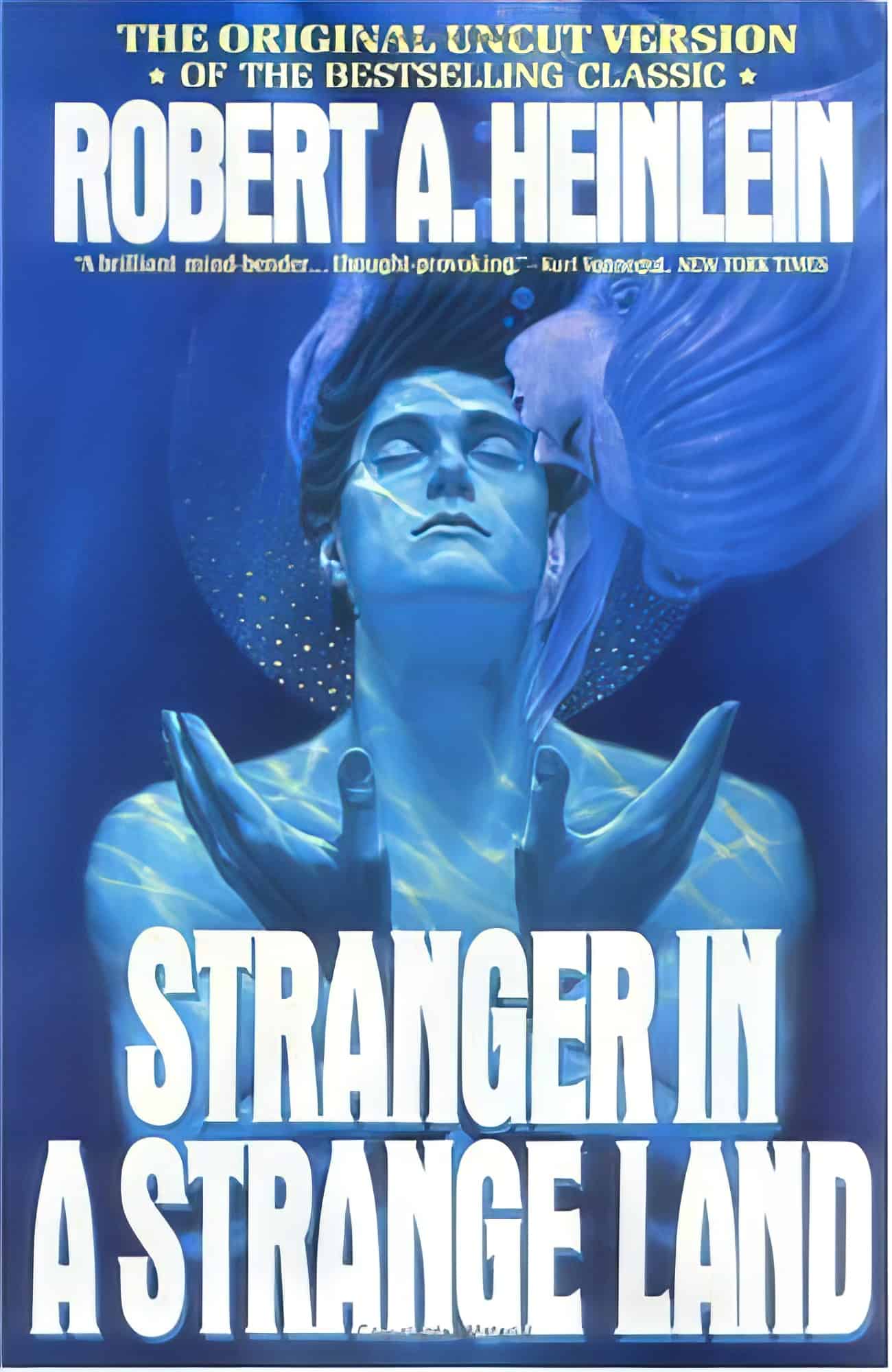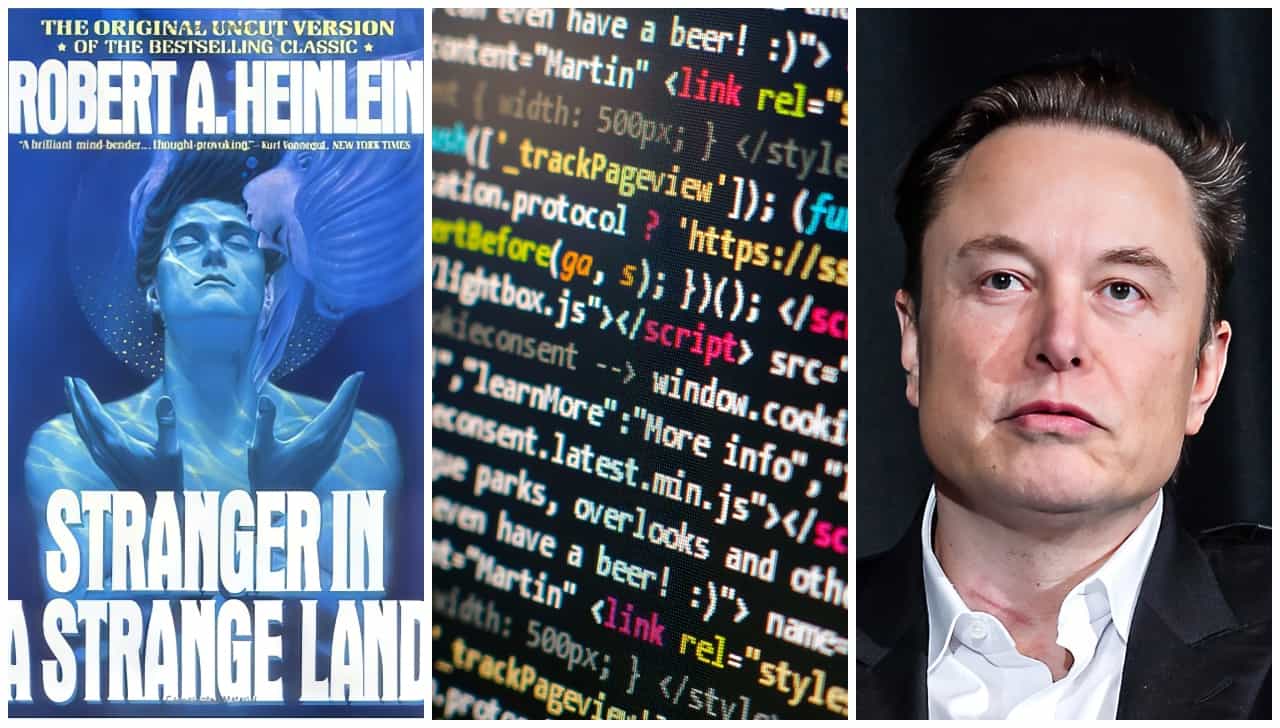Have you seen the word “grok” popping up and wondered, what does “grok” mean? This quirky sci-fi term first appeared in 1961 in Robert A. Heinlein’s novel “Stranger in a Strange Land.” I’ll break down this mind-bending concept, from its science fiction roots to its modern use in AI chatbots.
Get ready for a wild ride through space, time, and artificial minds.
Key Takeaways
Robert A. Heinlein created the word “grok” in his 1961 sci-fi novel “Stranger in a Strange Land,” which won the Hugo Award for Best Novel in 1962.
To grok something means to understand it so deeply that it becomes a part of you. The Oxford English Dictionary defines it as understanding intuitively or by empathy.
The term became popular in the 1960s counterculture movement. Tom Wolfe’s 1968 book “The Electric Kool-Aid Acid Test” helped spread its use beyond just sci-fi fans.
Programmers have used “grok” since the 1980s to describe a deep mastery of code. Tools like Elasticsearch’s log parser and the programming language Python proudly use the term.
Elon Musk’s xAI launched the Grok chatbot in November 2023. A key feature is its ability to access real-time information from the X platform, unlike some versions of ChatGPT.
Table of Contents
Definition of Grok

Now that you know the backstory, let’s break down what “grok” really means. The word is a powerful verb that means to understand something so completely that it becomes a part of you.
Think of it as the difference between knowing the theory of swimming and actually feeling the water. When you grok something, you don’t just know it, you live it.
The Oxford English Dictionary defines “grok” as “to understand intuitively or by empathy, to establish rapport with.” People who grok a topic don’t just memorize facts. They absorb the entire concept.
The term fits right in with other complex ideas like philosophy and reality. It’s like having a mental superpower where you see beyond the surface to the core of an idea.
Grokking is more than simple understanding. It’s about becoming one with the knowledge.
Origins of the Term

Robert A. Heinlein created “grok” in his 1961 sci-fi masterpiece, *Stranger in a Strange Land*. The novel tells the story of Valentine Michael Smith, a human born on Mars and raised by Martians, who later comes to Earth.
The book was a massive success, winning the Hugo Award for Best Novel in 1962 and becoming the first sci-fi novel to make The New York Times Best Seller list.
In the story, “grok” is a Martian word that literally means “to drink.” However, its meaning expands to represent a profound, intuitive understanding, as water is a symbol of deep connection on the scarce planet of Mars.
Grok means to understand so thoroughly that the observer becomes a part of the observed—to merge, blend, intermarry, lose identity in group experience. – Robert A. Heinlein
The word appears 231 times in the 1991 uncut version of the book, showing just how central the concept is to the story. Heinlein’s work introduced a word that would soon jump from its fictional Martian roots into everyday language.
The term quickly spread through sci-fi culture and beyond. It took on a life of its own, becoming a part of our speech, especially for people who love to dive deep into ideas.
Grok in Popular Culture

The word “grok” shot to fame through Heinlein’s novel, where Martians teach humans the art of total understanding. Do you want to know how this weird word changed everything from hippie culture to modern tech?
Stranger in a Strange Land

In “Stranger in a Strange Land,” the main character, Valentine Michael Smith, introduces “grok” to Earth. As a human raised by Martians, he brings with him a concept that blends water, life, and total understanding into one powerful idea.
Smith’s Martian perspective shows that to grok something, you don’t just know it; you become it. The novel was packed with big ideas about religion, sexuality, and social conformity, which resonated deeply with readers.
The book’s themes of personal freedom and challenging authority were especially popular with counterculture groups. This mix of spiritual and scientific thinking helped “grok” spread far beyond sci-fi fans, eventually making its way into the world of technology.
Adoption in Counterculture Movements

The 1960s counterculture, a movement that rejected conventional social norms, quickly adopted “grok.” Tom Wolfe’s 1968 book, “The Electric Kool-Aid Acid Test,” helped turn the word into a spiritual buzzword.
Hippies and other young people used it to describe deep understanding and self-discovery on their quest for new ways of seeing the world. It was a perfect fit for a generation questioning everything about authority, war, and society.
To grok in fullness means to understand so thoroughly that the observer becomes a part of the observed. – The Electric Kool-Aid Acid Test, 1968
“Grok” even spread into car culture. In his 1969 manual, *How to Keep Your Volkswagen Alive*, auto expert John Muir told readers to “grok the car.” The word became a versatile tool for describing deep, intuitive knowledge in many fields.
Grok in Technology

In tech circles, coders use “grok” for everything from mastering a programming language to data parsing. It has become a handy term for describing a deep, functional understanding of how digital systems work.
Usage in Programming and Software Development

Programmers have embraced “grok” as their go-to word for deep understanding since the 1980s. The term was immortalized in The Jargon File, a famous dictionary of hacker slang, which cemented its place in tech culture.
According to The Jargon File, to grok something means it has become part of your identity. For example, saying you “grok Python” implies you understand not just its syntax, but the entire philosophy behind the language.
You can see this in action with tools like cURL, the popular data transfer tool, which proudly states “cURL groks URLs.” This tells developers that the tool has a complete and intuitive mastery of how web addresses work. Similarly, the Elasticsearch team named their log parser “grok” because of its ability to deeply understand data patterns.
The word perfectly captures that “aha!” moment of truly mastering code. It’s the point where you stop just writing commands and start thinking in the language itself.
Grok Patterns for Data Parsing
 Grok patterns are a lifesaver for anyone working with log data. They are essentially pre-built regular expressions that help turn unstructured log messages into structured, usable data.
Grok patterns are a lifesaver for anyone working with log data. They are essentially pre-built regular expressions that help turn unstructured log messages into structured, usable data.
This process is crucial in the ELK Stack (Elasticsearch, Logstash, and Kibana), where Grok is used within Logstash to parse data before it’s stored and visualized. Instead of writing a complex expression to find an IP address, you can just use the pattern `%{IP:client_ip}`.
Common patterns like `USERNAME`, `EMAILADDRESS`, and `TIMESTAMP` help sort through mountains of data quickly. The right pattern can turn a jumbled mess of text into clear, useful information in seconds. Think of Grok as your digital translator, turning computer gibberish into human-friendly data.
Grok in Modern AI

Elon Musk’s xAI has jumped into the AI chatbot race with Grok, a bot that mixes brains with a bit of wit. Want to know how this new AI assistant stacks up against its rivals? Let’s dig in.
Elon Musk’s xAI and the Grok Chatbot

In November 2023, Elon Musk’s AI company, xAI, launched Grok. The chatbot is designed with a “rebellious streak” and a bit of wit, inspired by *The Hitchhiker’s Guide to the Galaxy*.
One of Grok’s biggest selling points is its ability to access real-time information from X (formerly Twitter), giving it an edge on current events over some competitors. Users currently need a Premium+ subscription to X, which costs $16 a month, to use it.
In March 2024, xAI made a significant move by releasing an open-source version of its large language model, Grok-1. This 314-billion parameter model allows developers and researchers to build upon Grok’s technology for their own projects.
Grok aims to do more than just answer questions. It’s designed to understand context and nuance, living up to the deep meaning of its sci-fi name.
People Also Ask
What’s the origin of the word “grok”?
The word comes from sci-fi roots. It first popped up in a book where characters said “thou art god” while talking about deep understanding. Like Schrodinger’s cat trilogy, it’s a term that makes you think twice about what you know.
How is “grok” used as a part of speech?
“Grok” works as both a verb and adjective. When someone says they’ve “grokked” something, they mean they get it completely. It’s like having an “aha!” moment that sticks.
Is there any connection between grok and ancient history?
Funny enough, some folks link the word to Horus, an ancient god from Abydos, Egypt. While pharaohs used complex symbols, “grok” is much simpler. It just means to understand deeply.
Why do we use “grok” when talking about AI chatbots?
We use it because it fits perfectly with how AI learns. When a chatbot “groks” something, it doesn’t just know the facts – it gets the whole picture. It’s about understanding the reason behind things, not just memorizing data.


